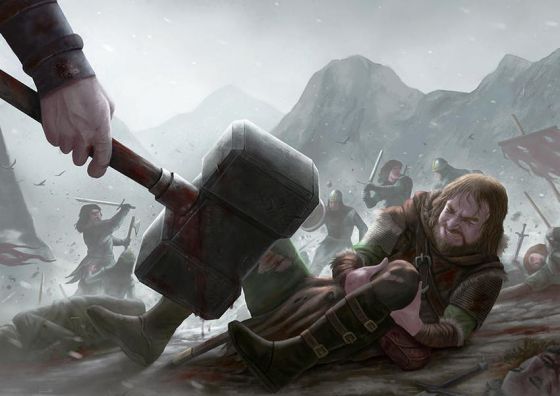Difference between revisions of "Injury"
Tao alexis (talk | contribs) |
|||
| Line 1: | Line 1: | ||
| − | [[File:Injury.jpg|right| | + | [[File:Injury b.jpg|right|560px|thumb]] |
'''Injuries''' are physical traumas that surpass the ordinary loss of [[Hit Points|hit points]]. Caused by accidents, [[Falling|falls]] and unusually heavy blows in [[Combat|combat]], an injury indicates that the character is seriously hurt. The result accounts for broken bones and bone fractures, ligament and tendon injuries, organ failures, [[Amputation (sage ability)|amputation]], [[Dismemberment|dismemberment]], lung scarring and effects from [[Disease|disease]] or [[Poison (substance)|poison]], among other things. The injury rule encapsulates traumas to the body that would take much longer to [[Healing|heal]] than ordinary hit points. | '''Injuries''' are physical traumas that surpass the ordinary loss of [[Hit Points|hit points]]. Caused by accidents, [[Falling|falls]] and unusually heavy blows in [[Combat|combat]], an injury indicates that the character is seriously hurt. The result accounts for broken bones and bone fractures, ligament and tendon injuries, organ failures, [[Amputation (sage ability)|amputation]], [[Dismemberment|dismemberment]], lung scarring and effects from [[Disease|disease]] or [[Poison (substance)|poison]], among other things. The injury rule encapsulates traumas to the body that would take much longer to [[Healing|heal]] than ordinary hit points. | ||
Latest revision as of 19:56, 10 October 2023
Injuries are physical traumas that surpass the ordinary loss of hit points. Caused by accidents, falls and unusually heavy blows in combat, an injury indicates that the character is seriously hurt. The result accounts for broken bones and bone fractures, ligament and tendon injuries, organ failures, amputation, dismemberment, lung scarring and effects from disease or poison, among other things. The injury rule encapsulates traumas to the body that would take much longer to heal than ordinary hit points.
When a character suffers 15 or more hit points of damage in a single blow, the character receives an injury. In addition to the lost hit points, the character also suffers 1 injury point. For each additional 5 points of damage suffered in a single blow, the character receives 1 additional injury point.
- For example, Caleb the Druid falls 30 feet and suffers 25 damage reducing him from his normal 23 maximum to -2 hit points. In addition, he receives 3 injury points. With so many possible ways to receive an injuries, and possible injuries that might result, it's recommended that the DM assign a credible injury in these situations, rather than imposing a random injury chart. A standardised chart is likely to produce irreconciliable results too often to be really useful.
Movement & Action Points
Characters who are suffering from an injury are appropriately limited by that injury. A character with a broken leg cannot get up and move around. Characters who have recieved internal damage must be careful not to promote internal bleeding. Torn ligaments and tendons will hamper the ability to move easily or take actions. For each point of injury suffered, the character also receives a -1 penalty against their total action points.
Healing an Injury
Injuries can be healed in the same way as hit points, except that it requires 10 points of healing before the point is removed. Moreover, all injury points must be healed first before other healing can take place.
In the example above with Caleb, he would need 30 points of healing to remove his 3 points of injury. During that time, he would remain at -2 hit points — meaning that, with the rules surrounding negative hit points, his ability stats would be penalised by 20%. When Caleb's injuries are healed, he may begin to restore hit points normally.
See also,
Acupuncture (sage ability)
Regeneration (spell)
The Adventure
